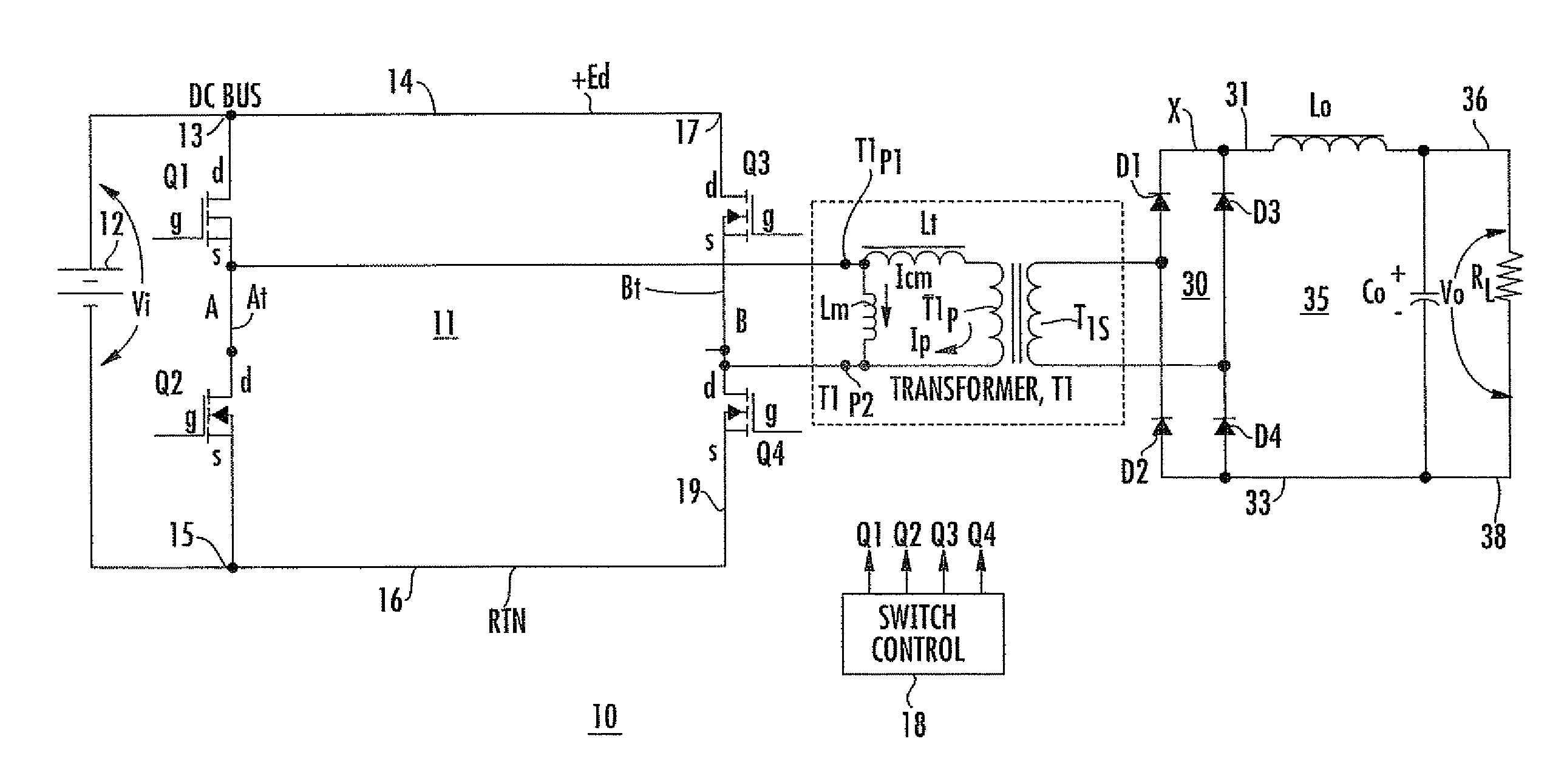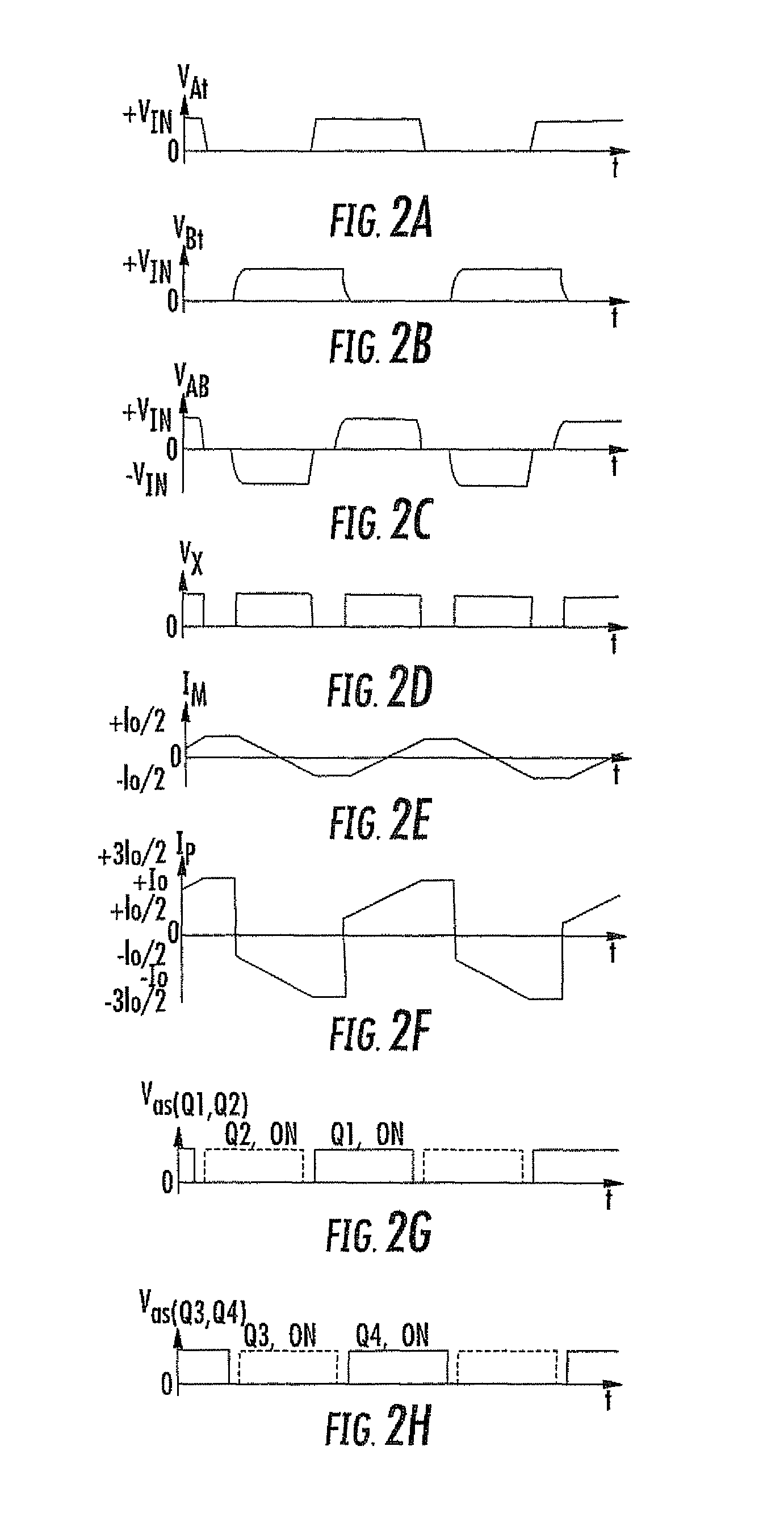Voltage clamps for energy snubbing
a technology of energy snubbing and voltage clamping, which is applied in the direction of dc-dc conversion, power electronics conversion efficiency, and emergency protective circuit arrangemen
- Summary
- Abstract
- Description
- Claims
- Application Information
AI Technical Summary
Benefits of technology
Problems solved by technology
Method used
Image
Examples
Embodiment Construction
[0026]FIG. 3 is a simplified representation of the circuit of FIG. 1, illustrating certain additional elements important to consideration or understanding of overall efficiency of dc-to-dc converter. In FIG. 3, the full-wave bridge rectifier 30 of FIG. 1 is replaced for ease of understanding with a full-wave rectifier 330 including a center-tapped transformer T1 secondary winding T1s, but the same principles apply to a full-wave bridge rectifier. In FIG. 3, unidirectional current conducting devices (rectifiers or diodes) D1 and D2 of FIG. 2 have their anodes connected to the two ends of secondary winding T1s, and their cathodes connected together and by way of a conductor 31 to an end of inductor Lo of output filter 35. The diodes exhibit anode-cathode junction capacitance when in the reverse-biased state. The capacitance of diode D1 is illustrated as CD1, and the capacitance of diode D2 is illustrated as CD2. The rectified pulsating direct current from secondary winding T1s is appl...
PUM
 Login to View More
Login to View More Abstract
Description
Claims
Application Information
 Login to View More
Login to View More - R&D
- Intellectual Property
- Life Sciences
- Materials
- Tech Scout
- Unparalleled Data Quality
- Higher Quality Content
- 60% Fewer Hallucinations
Browse by: Latest US Patents, China's latest patents, Technical Efficacy Thesaurus, Application Domain, Technology Topic, Popular Technical Reports.
© 2025 PatSnap. All rights reserved.Legal|Privacy policy|Modern Slavery Act Transparency Statement|Sitemap|About US| Contact US: help@patsnap.com



